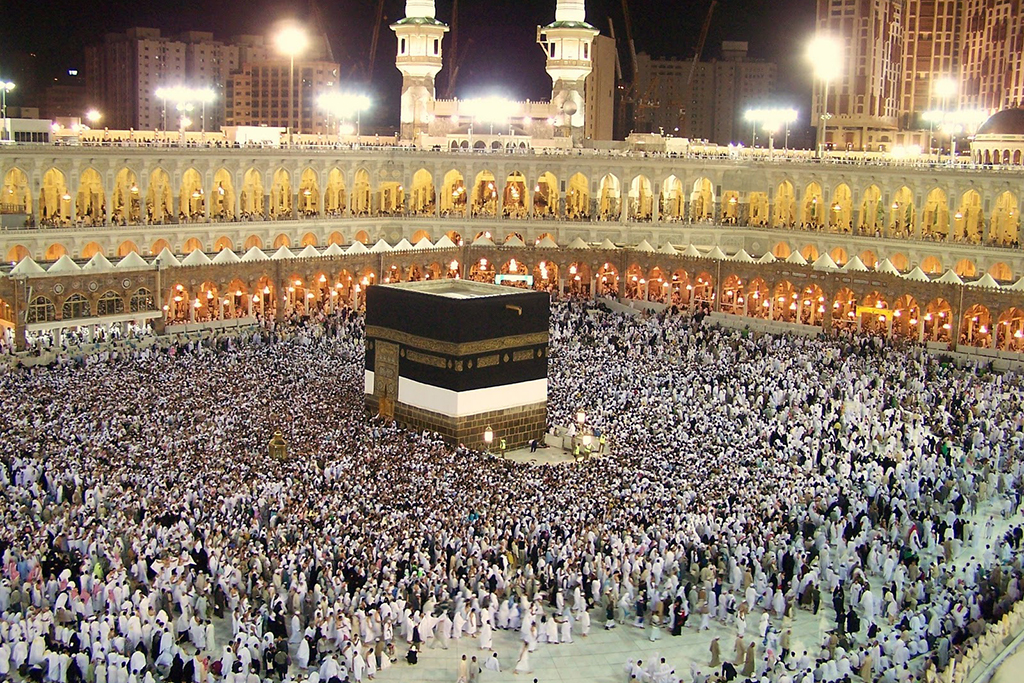The Hajj: A Sign of Atonement and Sacrifice
“Man can have nothing but what he strives for: And that his striving will soon be seen. Then he will be rewarded for it with the fullest reward: And that to thy Lord is the goal: And that He it is Who makes (men) laugh and makes (them) weep: And that He it is Who causes death and gives life.” ~ Holy Qur’an (53:40-44)
The Pilgrimage of the Muslims to the Holy City of Mecca is among the five obligatory principles of action in Islam for all Muslims, at least once in his or her lifetime. The Muslim Pilgrimage or Hajj is a series of ancient rites that point to the goal of self, family, and nation.
The Honorable Elijah Muhammad stated in Message to the Blackman in America, “The main principles of action in Islam: [are] keeping up prayer, spending in the cause of truth, fasting especially during the month of Ramadan, [and] pilgrimage to Mecca...”
Hajj is an Arabic word that means to intend to a target, aim at, undertake, contend with, and to go on a pilgrimage. The word Hajj also carries the name of the matriarch Hagar. The rites of Hajj are a reenactment of some actions of Abraham, his wife Hagar, and son Ishmael, on them be peace.
The Festival of Sacrifice commemorates Abraham's willingness to follow God's command to sacrifice his son Ishmael and his son Ishmael's consent to being sacrificed. Today, it is marked by slaughtering of animals to feed the poor.
According to Islamic sources, Hagar is buried at the northwestern wall of the Ka’aba near its third column which is marked by a semi-circle. This area extends from the Ka’aba wall and is known as the ‘skirt of Hagar,’ where she is reported to have lived and reared Ishmael.
Hijrah is what Hagar did with her son directed by Abraham’s vision from Allah (God). Muhammad on him be peace said, “the ideal pilgrim is the one who behaved like Hagar”. The word hijrah means migration and has its root in her name as does the word muhajir (immigrant or migrant). In Hagar’s mother language, her name means “the city”. Why does the name of this Black Ethiopian woman point to civilization? Why do the rites of Hajj center around her struggle?
At the age of sixteen, I and my family, began the Hajj journey seeking a state of mental, physical, and spiritual purity, through a series of preparations, which included prayer, bathing, cutting the hair, and wrapping ourselves in two simple stitch-less white garments called Ihram. Through prayer and contemplation we are immersed in a state of mind as though we may never return.
Once we reached a designated point (Miqat) on the journey to the Holy precincts we began to recite repeatedly aloud in unison with the other pilgrims (Hujjaj) the Arabic phrase, Labaik Allahumma Labaik - “Here I am, O Allah, here I am!” As I recited, I could no longer distinguish my voice from that of my fellow pilgrims, as a servant among a sea of Allah’s (God’s) servants that sought to answer Allah’s call to worship Him Alone.
“Surely, I have turned myself to Thee, O Allah, trying to be upright to Him Who originated the heavens and the earth and I am not of the polytheists. Surely my prayer and my sacrifices, my life and my death are all for Allah, the Lord of the Worlds. No associate has He, and this am I commanded and I am of those who submit.”
Prophet Muhammad, peace be upon him, reportedly said, “one of the best jihad is the Hajj.” This tells us that the Hajj is a struggle against the rebellion within ourselves to establish our willingness for self-sacrifice in the cause of the perfection of society and human excellence.
The Honorable Minister Louis Farrakhan explains, "The very ritual of Hajj is a sign of what the world will be like in totality when The Mahdi establishes the Kingdom of Islam. In that day, there will be no racism to corrupt the Spirit of Islam. There will be no sexism, there will be no materialism and there will be no nationalism. All of the corrupters of the True Spirit of Islam will be completely destroyed.”


No Comments